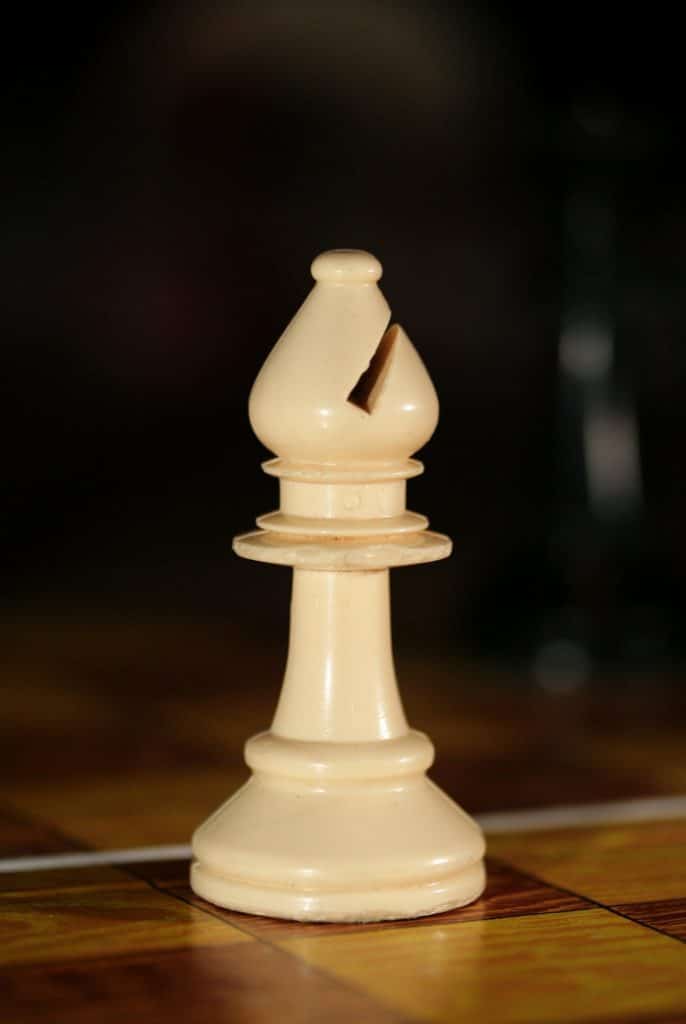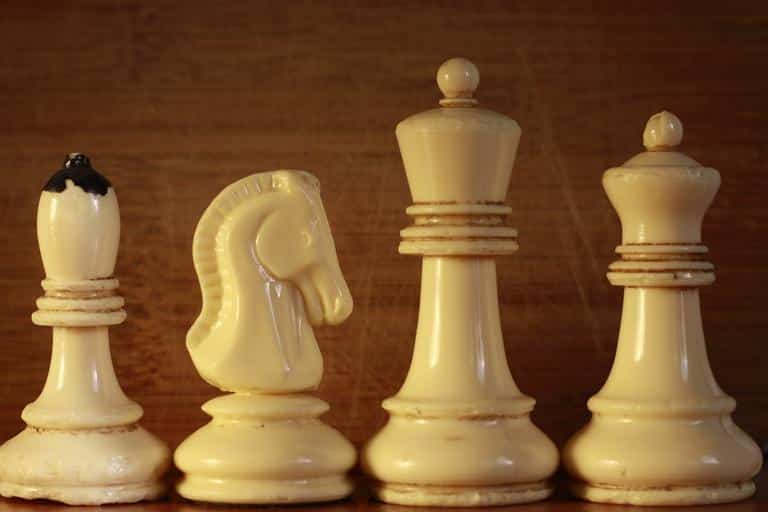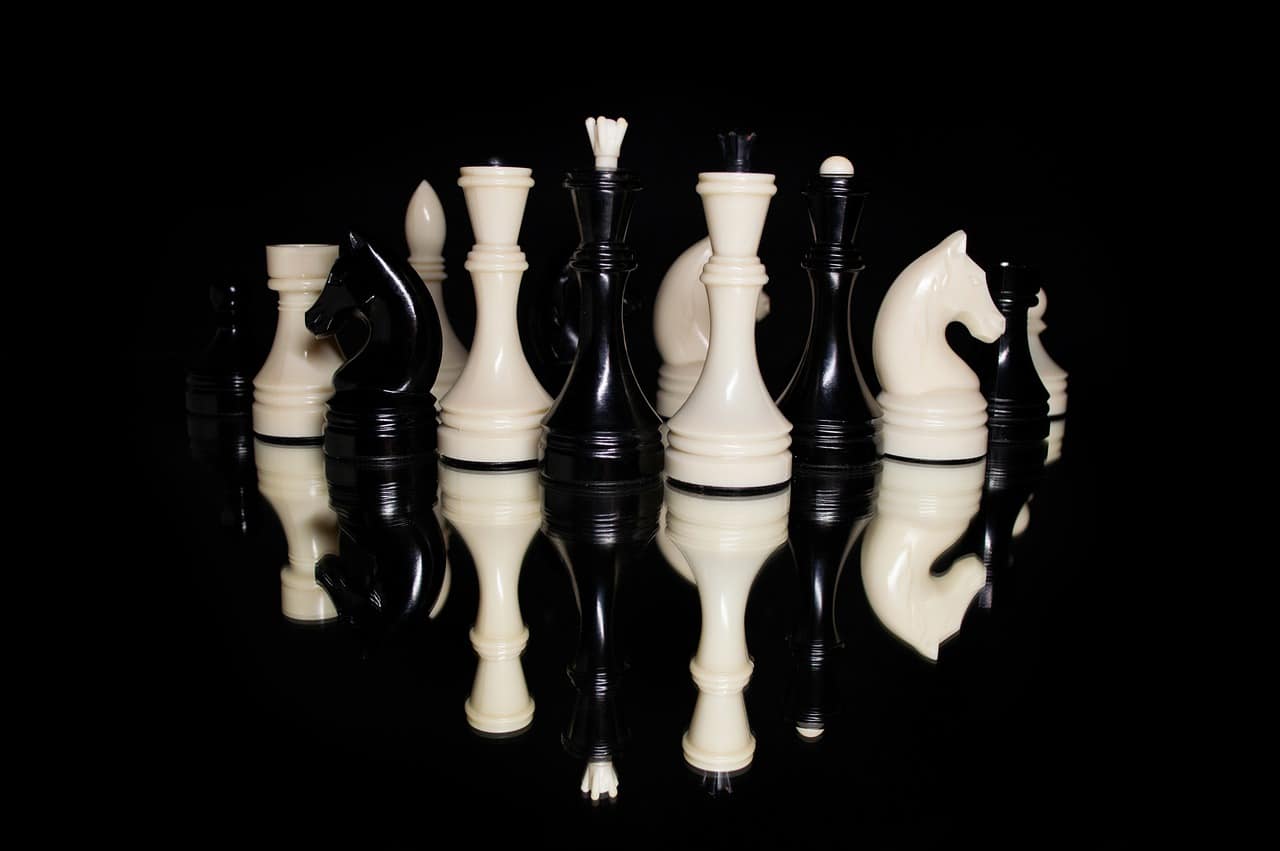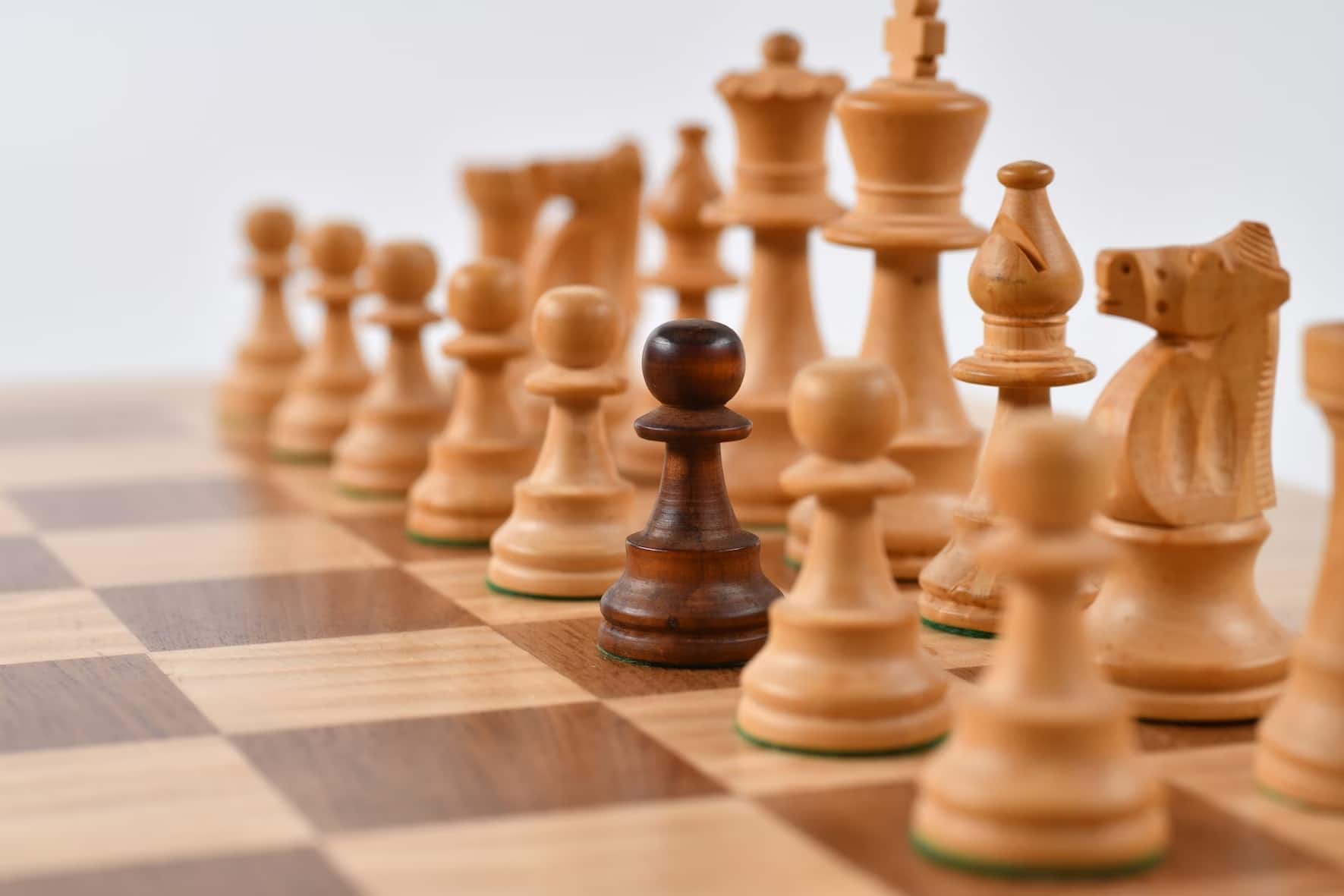Table of Contents
What is the bishop chess piece?
The most aggressive attacking minor piece in strategic games is the bishop chess piece. The bishop is an important piece in chess that can accomplish many roles depending on the positioning and activity.
The bishop chess piece could be your best friend as it can be your worst ally if you don’t pay attention to it. We have already talked about the bishop chess piece strategies to win at chess in a different blog post, make sure you check that out.
I will explain the definition and main ideas of the bishop simply so anyone can understand it. I am pretty sure you will find some interesting facts about the bishop you surely don’t know.
The positioning of the bishop is equal for both sides (black and white) and they are placed in the following squares:
- C8 and F8 the white squares and black squares bishop respectively for the black pieces.
- C1 and F1 the black squares and white squares bishop respectively for the white pieces
Bishop moves along diagonals, and it can be moved all the squares you like, but it can’t go over other pieces. You can move the bishop forward and backward as many times and squares you like as long is not an illegal move.
Some people say you can move the pieces over other pieces if they are the same color and this is false. The only piece that can get over other pieces is the knight but the bishop chess piece cannot do it.
The Bishop chess piece in the middle-age
Did you know that modern chess came from a mix and evolution of different chess variations?
Yes! And how these variations evolved from the game they were to the game they are is amazing.
The chess bishop piece was not originally called “bishop” and was not from a game called “chess” either. In medieval shatranj, which was the first version of what we called chess these days, the bishop was called “alfil” which means “elephant”.
This was the name they gave to it in India, the country in which was created the variations of the first of chess that resembles the most modern chess. Also, the piece was not as we know it now, it was a figurine of an elephant.
Around the same age, a piece with the same movement and characteristics as the bishop chess piece was created in Japan. It appeared in the Japanese version of chess (Shogi) and it was called “Kaku” which literally means bishop.
The final decision on the name they were going to give this piece was bishop. The term was first used by the English in the 16th century, calling this piece bishop because the piece design looked like a bishop’s miter.
The relativity of the bishop chess piece
Bishops are quite complicated to understand because like any other chess concept it has many conditions and techniques that make them difficult to handle.
It is useful to study bishop chess piece endgames, this will help you fully catch the power that a bishop can have. Some people argue bishops and knights are equal but this is not absolute.
A practical example would be analyzing how bishops and knights help your position, you will find bishops always have a more important role. A fun fact that supports this theory is that two knights and the king can’t checkmate the enemy king by themselves.
While two bishops and a king can checkmate fast and with an easy technique.
It is also quite interesting how to treat a position with a bad bishop against a different piece.
Opposite colors chess bishops
We have to know that we call white or black squared bishop the bishops can only run along with with a specific color of squares. The bishop that starts the position in c1 (black squares bishop for white) will never be able to attack or dominate white squares only black squares.
This can be very interesting and even used to your advantage in chess, to make a draw or winning the game.
For example, in a chess position, you have a black squares bishop while your opponent has a white squares bishop. A good strategy would be to place your pawns in black squares so the enemy bishop can’t attack them.
The effectiveness of this technique will depend on the number of pawns in the position, normally this will work the 90% of the cases but still is not always.
Depending on the structure of pawns and possibilities of the enemy in the game you probably will need to do it the other way around.
People say opposite colors bishops tend to give drawing positions but this, once again, is not accurate. I recommend you study specific endgames and research how the chess bishop piece works in these cases.
Chess bishop domination in the endgame
In the endgame the bishop chess piece takes a lot of importance, we can even say the bishop increases their relative value. When the major pieces trade-off the board and only the minor pieces are in action they become really important.
A bishop against a knight endgame can be very comfortable for the bishop side most of the time. A bishop can completely dominate a poor knight badly placed on the edge of the board or at a corner.
The bishop chess piece can dominate a large number of squares with good cadency and security. Having a bishop protecting the pawn chain is the best you can do to improve your king in the endgame.
A bishop can be stronger than the rooks in different positions, you just need to know how to handle them.
You may also like:
How to use the chess queen to take over the tournament
Superb Dragon Chess sets You Must See!
Bishop Chess Killer Strategy to Win Games like a Grandmaster












